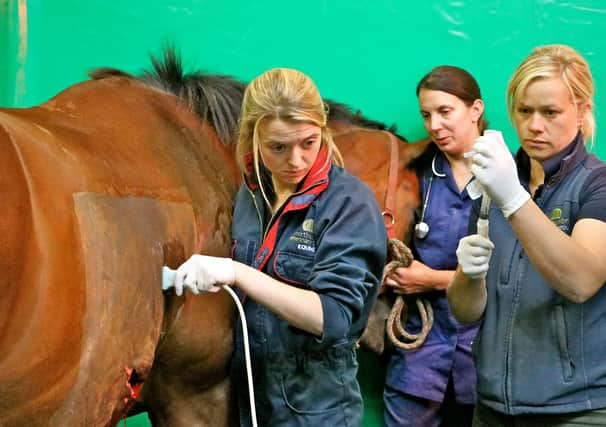FARMING: Explaining those veterinary men, and women, of letters


The first set of initials (BVMS, BVetMed, BVM’S, BVM BVS, etc) is the Veterinary Degree we all hold, each University has a slight variation meaning you can tell where each vet graduated from. Roughly they are all Bachelors degrees in Veterinary Medicine and Surgery.
Next some of our vets have CertEP, Cert SAS, CertAVP. This signifies our certificate holders in Advanced Veterinary Practice, with some letters denoting our particular specialism (EP=equine practice, SAS=small animal surgery etc).
Advertisement
Hide AdAdvertisement
Hide AdA certificate is a masters level further degree undertaken over the course of 6 modules, each module takes around 4 months to complete.
Finally we all have MRCVS, this denotes our membership to the Royal College of Veterinary Surgeons. This is a legal requirement to practice as a vet within the UK. In order to join you have to have a veterinary degree which is recognised by the RCVS, and we must take an oath (much like the medical hippocratic oath), and we are then bound by the RCVS code of conduct.
To remain a member of the royal college all our vets must undergo at least 35 hours of continued professional development (CPD) per year, and our registered veterinary nurses must complete 15 hours per year. This year nearly all of our CPD has been carried on online for obvious reasons. Usually most of the hours we complete take the form of courses run by the relevant specialists and attendance at conferences. We are also very lucky to have visiting
specialists who regularly provide in house training for all our vets and nurses.
Advertisement
Hide AdAdvertisement
Hide AdMore information on veterinary degrees and levels of training can be found on the RCVS website www.rcvs.org.uk. To find out more about our vets’ history have a look at our biographies on the website www.alnorthumbriavets.co.uk.